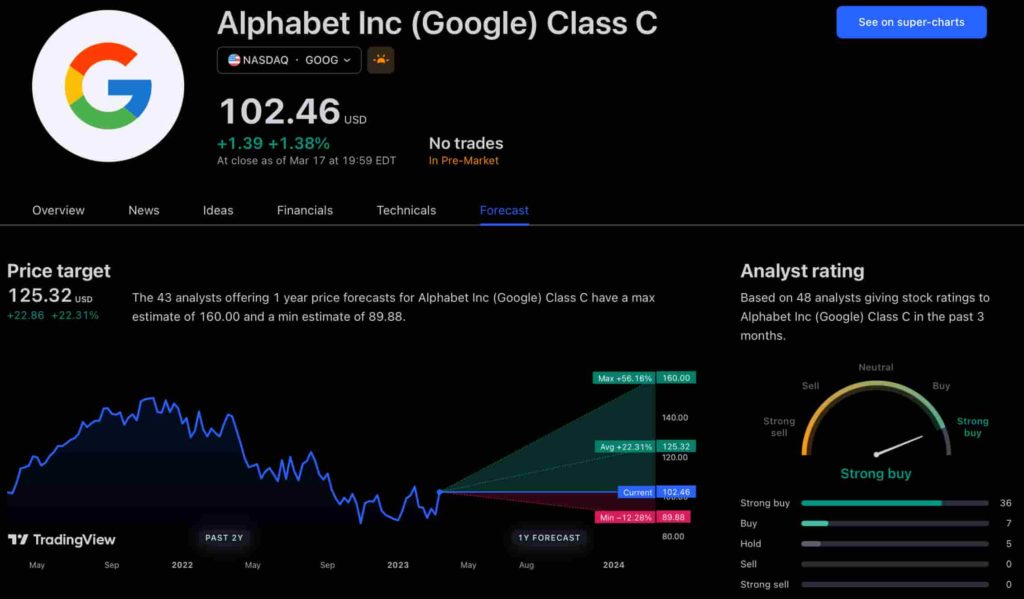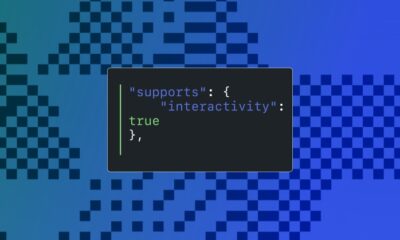The new app is called watchGPT and as I tipped off already, it gives you access to ChatGPT from your Apple Watch. Now the $10,000 question (or more accurately the $3.99 question, as that is the one-time cost of the app) is why having ChatGPT on your wrist is remotely necessary, so let’s dive into what exactly the app can do.
NEWS
WordPress Takes Steps to Achieve Performance Lead via @sejournal, @martinibuster
The new WordPress Performance Team, which includes contributors from Google and Yoast, is meeting to plan the next steps for coordinating efforts for improving WordPress performance. A kickoff meeting is happening on Tuesday, November 2, 2021.
What is underway is an energized approach toward solving performance bottlenecks in all areas of WordPress, including plugins and themes.
Virtually everything is on the table, with currently 19 categories of focus-areas to improve.
The initial meeting is in the WordPress slack group. Those without access are encouraged to participate in the announcement comment area.
Initial plans for the performance team meeting:
- “lead the working groups formation
- coordinate the initial administrative tasks (slack channel, weekly meetings, schedule working groups representative nominations, etc.)
- create a mission statement for the team
- coordinate the areas to tackle
- outline the scope and the roadmap”
The Performance Team Meeting Agenda
The meeting agenda lists three items, a welcome, an open floor (where people can speak freely) and a time for defining areas of focus.
Advertisement
Continue Reading Below
Defining areas of focus is an important part of the agenda because it may help set the outlines for a road map of continuing the efforts to improve WordPress performance.
That said, there is already a spreadsheet with 19 categories of areas to improve.
The Performance Team describes keeping the focus of the meeting limited to begin with:
“…we will initially aim to keep the scope limited by defining the most impactful area of focus and create working groups if need be.
Defined focus areas will be the main points of discussion during weekly chats.
An agenda item for the first meetings will be to define the initial focus areas for the team.”
19 Categories for Improvement
There is a spreadsheet called, WP Performance Team: Focus Areas and Working Groups that lists 19 areas of focus.
Among the categories are these targets for improvement:
- Images
Serving images in good quality but as small as possible - JavaScript
Optimizing JavaScript orchestration – Script prioritization, async/defer loading, use of module(s), loading scripts in footer, conditional loading… - CSS
Reducing CSS overhead – Critical CSS inlining, CSS tree shaking, CSS minification, … - Web fonts
Reducing web fonts overhead – Web fonts orchestration, fonts CSS inlining, avoiding multiple requests, … - Themes/Plugin requirements
Encouraging plugins to provide better performance: Automatic performance tests in CI, flagging problematic plugins, …
Advertisement
Continue Reading Below
This is the full list of 19 categories, which can be reviewed in the official Performance Team spreadsheet:
- Images
- JavaScript
- CSS
- Web fonts
- Asset caching
- Page caching
- Object caching
- Bootstrap
- Embeds
- Facades
- SQL
- Redirects
- CDN support
- Themes/Plugin requirements
- Host configuration
- Site Health
- Localization
- Measurement
- Hints
Helping Plugin Developers/Not Policing Them
A forward-looking approach taken by the Performance Team is to focus on how they can help plugin developers better performing software that didn’t slow down a website.
Performance Team members left comments on the right hand side that align with the 19 categories of focus that are listed on the left hand side of the spreadsheet.
Screenshot of a WordPress Performance Team Comment


One commenter on the performance projects spreadsheet discussed creating a handbook while another (Googler Thierry Mueller) suggested adding performance signals to help publishers better understand where their plugins stood in terms of performance.
One of the Performance Team members commented about helping plugin developers:
There is a huge work to be done to educate plugin and theme developers to better understand how to enqueue assets correctly/when needed.
I’m available to write a handbook section about this and to put together some enqueues best practices/lessons as I already have started this QA job in my company.
In the same comment stream Thierry Mueller of Google commented about how to help plugin developers:
“Top of mind is introducing some performance signals to the plugins and themes review. That could already stop some of the bleeding for new plugins/themes and we could think of helping plugins/themes on update as well which would very quickly circle around all active plugins.”
Active Performance Projects
WordPress tracks various development projects and some of them are related to performance, as listed in this official WordPress page.
One of the projects is fixing a bug in the media uploader that causes the WordPress site to create a new version of the image that is three to four times bigger than the original image.
Advertisement
Continue Reading Below
Another project currently in progress is omitting the lazy load attribute from images that are above the fold in order to improve performance.
WordPress is Fighting Back
WordPress is taking a coordinated approach toward improving performance. The next steps will be discussed Tuesday November 2, 2021.
The focus is already toward achieving the most “impactful” wins on the WordPress core itself and thinking of ways to help plugin and theme developers create software that doesn’t slow websites down.
Among the project participants are contributors from Google and Yoast. While this is just a beginning, looking at the projects already underway WordPress may begin building success upon success very soon.
Drupal, Wix , and Duda have surged well ahead of WordPress in terms of performance. The new performance team may help WordPress gain the top spot.
Citations
Read the Details of the Performance Team Kick Off Meeting
WordPress Performance Team Kick Off
Review the WordPress Spreadsheet with List of Future Improvements
WP Performance Team: Focus areas and working groups
Advertisement
Continue Reading Below
Facebook Faces Yet Another Outage: Platform Encounters Technical Issues Again

Uppdated: It seems that today’s issues with Facebook haven’t affected as many users as the last time. A smaller group of people appears to be impacted this time around, which is a relief compared to the larger incident before. Nevertheless, it’s still frustrating for those affected, and hopefully, the issues will be resolved soon by the Facebook team.
Facebook had another problem today (March 20, 2024). According to Downdetector, a website that shows when other websites are not working, many people had trouble using Facebook.
This isn’t the first time Facebook has had issues. Just a little while ago, there was another problem that stopped people from using the site. Today, when people tried to use Facebook, it didn’t work like it should. People couldn’t see their friends’ posts, and sometimes the website wouldn’t even load.
Downdetector, which watches out for problems on websites, showed that lots of people were having trouble with Facebook. People from all over the world said they couldn’t use the site, and they were not happy about it.
When websites like Facebook have problems, it affects a lot of people. It’s not just about not being able to see posts or chat with friends. It can also impact businesses that use Facebook to reach customers.
Since Facebook owns Messenger and Instagram, the problems with Facebook also meant that people had trouble using these apps. It made the situation even more frustrating for many users, who rely on these apps to stay connected with others.
During this recent problem, one thing is obvious: the internet is always changing, and even big websites like Facebook can have problems. While people wait for Facebook to fix the issue, it shows us how easily things online can go wrong. It’s a good reminder that we should have backup plans for staying connected online, just in case something like this happens again.
NEWS
We asked ChatGPT what will be Google (GOOG) stock price for 2030

Investors who have invested in Alphabet Inc. (NASDAQ: GOOG) stock have reaped significant benefits from the company’s robust financial performance over the last five years. Google’s dominance in the online advertising market has been a key driver of the company’s consistent revenue growth and impressive profit margins.
In addition, Google has expanded its operations into related fields such as cloud computing and artificial intelligence. These areas show great promise as future growth drivers, making them increasingly attractive to investors. Notably, Alphabet’s stock price has been rising due to investor interest in the company’s recent initiatives in the fast-developing field of artificial intelligence (AI), adding generative AI features to Gmail and Google Docs.
However, when it comes to predicting the future pricing of a corporation like Google, there are many factors to consider. With this in mind, Finbold turned to the artificial intelligence tool ChatGPT to suggest a likely pricing range for GOOG stock by 2030. Although the tool was unable to give a definitive price range, it did note the following:
“Over the long term, Google has a track record of strong financial performance and has shown an ability to adapt to changing market conditions. As such, it’s reasonable to expect that Google’s stock price may continue to appreciate over time.”
GOOG stock price prediction
While attempting to estimate the price range of future transactions, it is essential to consider a variety of measures in addition to the AI chat tool, which includes deep learning algorithms and stock market experts.
Finbold collected forecasts provided by CoinPriceForecast, a finance prediction tool that utilizes machine self-learning technology, to anticipate Google stock price by the end of 2030 to compare with ChatGPT’s projection.
According to the most recent long-term estimate, which Finbold obtained on March 20, the price of Google will rise beyond $200 in 2030 and touch $247 by the end of the year, which would indicate a 141% gain from today to the end of the year.
Google has been assigned a recommendation of ‘strong buy’ by the majority of analysts working on Wall Street for a more near-term time frame. Significantly, 36 analysts of the 48 have recommended a “strong buy,” while seven people have advocated a “buy.” The remaining five analysts had given a ‘hold’ rating.

The average price projection for Alphabet stock over the last three months has been $125.32; this objective represents a 22.31% upside from its current price. It’s interesting to note that the maximum price forecast for the next year is $160, representing a gain of 56.16% from the stock’s current price of $102.46.
While the outlook for Google stock may be positive, it’s important to keep in mind that some potential challenges and risks could impact its performance, including competition from ChatGPT itself, which could affect Google’s price.
Disclaimer: The content on this site should not be considered investment advice. Investing is speculative. When investing, your capital is at risk.
NEWS
This Apple Watch app brings ChatGPT to your wrist — here’s why you want it

ChatGPT feels like it is everywhere at the moment; the AI-powered tool is rapidly starting to feel like internet connected home devices where you are left wondering if your flower pot really needed Bluetooth. However, after hearing about a new Apple Watch app that brings ChatGPT to your favorite wrist computer, I’m actually convinced this one is worth checking out.
-

 SEARCHENGINES6 days ago
SEARCHENGINES6 days agoGoogle Core Update Volatility, Helpful Content Update Gone, Dangerous Google Search Results & Google Ads Confusion
-

 SEO6 days ago
SEO6 days ago10 Paid Search & PPC Planning Best Practices
-

 MARKETING5 days ago
MARKETING5 days ago5 Psychological Tactics to Write Better Emails
-

 MARKETING7 days ago
MARKETING7 days ago2 Ways to Take Back the Power in Your Business: Part 2
-

 SEARCHENGINES5 days ago
SEARCHENGINES5 days agoWeekend Google Core Ranking Volatility
-

 SEO6 days ago
SEO6 days agoWordPress Releases A Performance Plugin For “Near-Instant Load Times”
-

 MARKETING6 days ago
MARKETING6 days agoThe power of program management in martech
-
SEARCHENGINES4 days ago
Daily Search Forum Recap: April 15, 2024














You must be logged in to post a comment Login